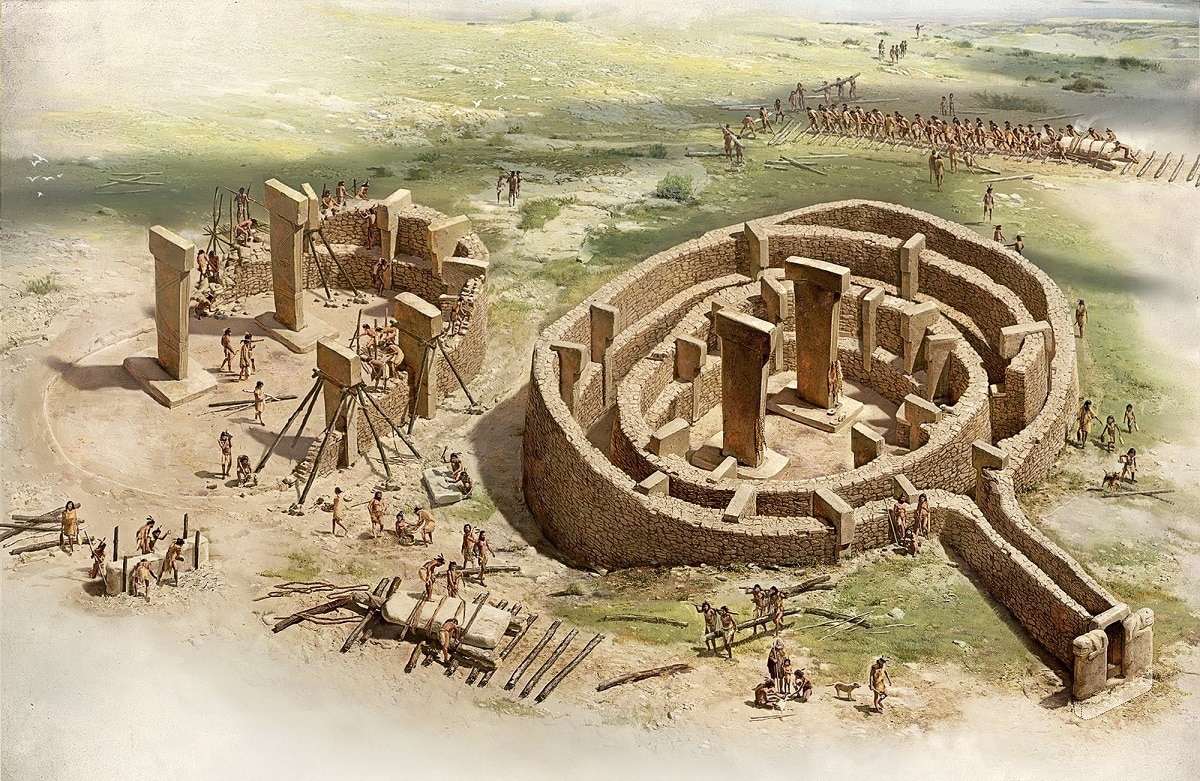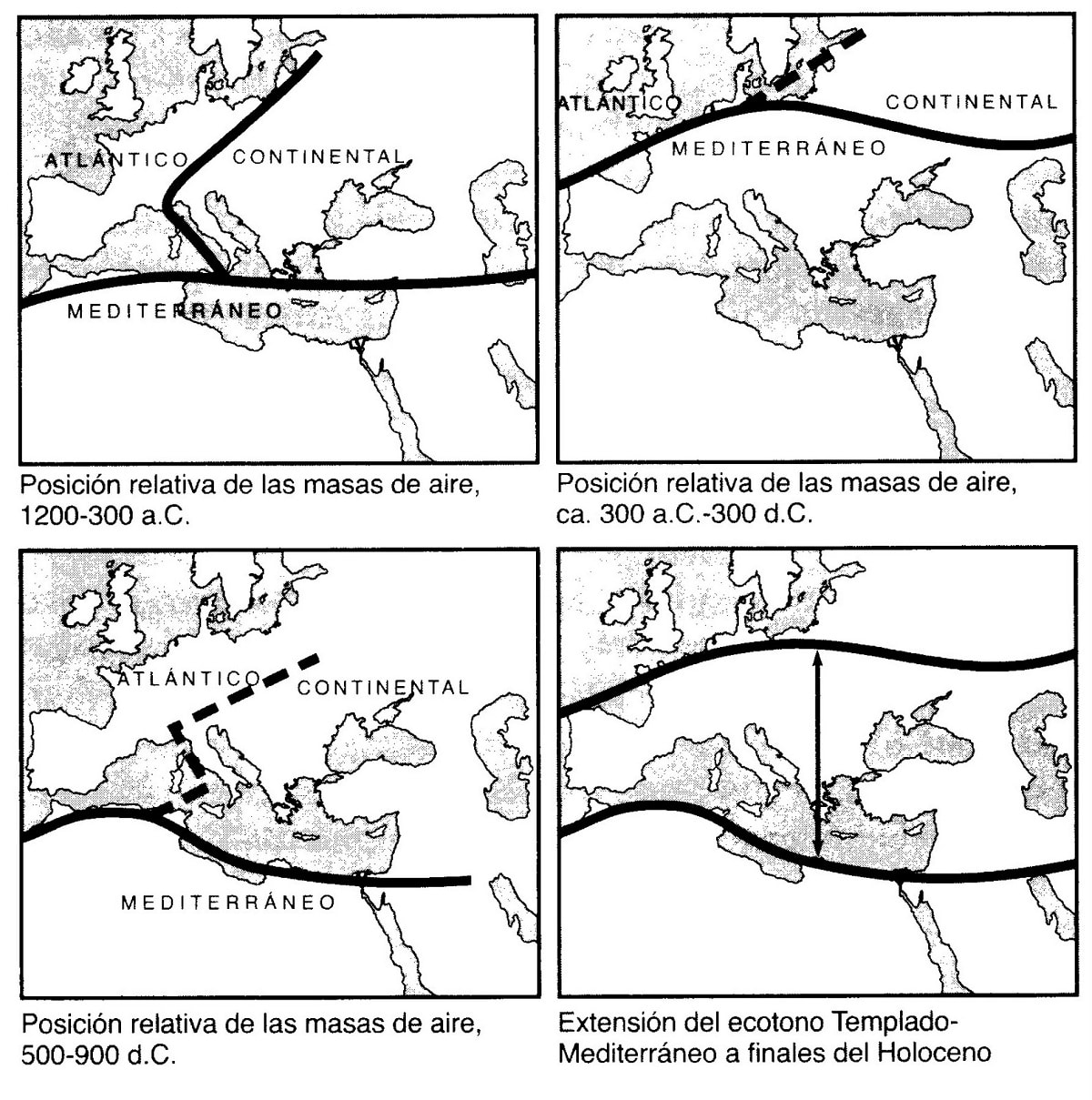
El roman climatic optimum or medieval, sometimes referred to as global warming of the year thousand or embellished thousand, was a period of unusually warm weather in the North Atlantic region that lasted from approximately the 1990th to the XNUMXth century. Climatic optima are often mentioned in the discussions that fuel the contemporary debate on global warming. Some studies point to this period as a medieval climatic anomaly of global cooling and/or highlight the importance of its effects beyond the anecdotal realm of temperature. The Roman climatic optimum had higher temperature levels than the subsequent Little Ice Age, more precisely equivalent to the XNUMXs, but would not reach the "global" temperature levels of the XNUMXst century.
In this article we are going to tell you about the characteristics of the Roman climatic optimum and how they affected the world.
Roman climatic optimum

Since the last ice age, climatic rhythms have been interrupted several times. The Little Ice Age and the Medieval Warm Period They are two episodes from the last two thousand years. Due to the lack of accurate historical documents covering the entire Earth and the lack of high-resolution models that allow us to reconstruct past climates, we still don't know the exact dates, temperature amplitudes, or spatial extent. These seem to be able to vary according to the hemisphere and the main biogeographical regions.
According to available historical and paleoclimatic data, there was a Roman climatic optimum (hottest period), whose start and end dates remain unclear. In the European Middle Ages, it would appear around 950 to 1350. Preliminary studies of this climatic event and the subsequent Little Ice Age have been largely carried out in Europe, where the phenomenon seems to be the most visible and, above all, the most better documented.
Past weather events

Initially, temperature changes were thought to be global. However, these views are controversial. A 2001 report by the Intergovernmental Panel on Climate Change summed up the state of knowledge, according to experts and scientific panels within the organization: "... the current facts do not allow us to say 'there is a synchronized cooling or warming periods are unusual during the period into consideration, and the traditional terms 'little ice age' and 'Roman climatic optimum' are of little use in describing trends in average temperature changes over the past few centuries«.
According to the US Oceanic and Atmospheric Research Agency (NOAA), “the idea of a hemispheric or global 'medieval climate optimum' would have been warmer than the current one. Or something else, has not been found" and that "existing traces suggest that there was no long-term period, the temperature of the hemisphere or of the world can reach or surpass the temperatures of the XNUMXth century”.
Some paleoclimatologists working on the reconstruction of historical climatic regions often refer to the coldest period as the "Little Ice Age" and the warmest period as "Medieval Global Warming". Others follow convention, and when they identify a major climate event within the Little Ice Age, or optimum climate, they link their events to that period. Therefore, some of the best weather events are periods of increased humidity or cold, rather than strictly warmer periods, and this is especially true in central Antarctica, where opposite evolutionary climate performances have been recorded in the North Atlantic.
Roman climatic optimum in different parts of the world

North Atlantic and North America
The Vikings took advantage of the ice-free seas to colonize Greenland and other remote areas in the far north. The PCM was followed by the Little Ice Age, a cooling era that lasted until the 800th century. In the Chesapeake Bay (USA), the researchers found large temperature changes during the climatic optimum (about 1300-1400 years) and the Little Ice Age (about 1850-XNUMX years), which may be related to changes in intensity of the North Atlantic thermohaline circulation.
Sediments from Pyrmont Swamp in the Lower Hudson Valley, New York, USA, attest to the warm, dry medieval period between 800 and 1300. A prolonged drought has affected parts of the western United States, particularly eastern California and western Great Basin. Alaska had to experience 3 similar heat waves: from 1 to 300 A.D. C., from 850 to 1200 and after 1800.
During more favorable climates, viticulture spread from northern Europe to southern England, where it still exists today.
Other regions
The climate of Eastern Equatorial Africa alternated between being drier than today and relatively wetter. The driest climate occurred during the medieval climatic optimum, around 1000 to 1270.
Ice cores from the east of the Bransfield Basin on the Antarctic Peninsula clearly show the Little Ice Age event and optimal medieval climate. Carrots left to distinguish the cold period around 1000-1100 AD AD accurately illustrates the fact that optimum climate is a moving concept, and during this "warm" period, there may be simultaneous local warming (at the North Pole ) and a cooling (at the South Pole).
Research on Pacific corals ssuggests that cool, dry conditions may have persisted well into the second millennium, in line with the possible environmental manifestations of La Niña. Although data for Australia are very sparse (climate optimum and the Little Ice Age), evidence of undulating gravel formations suggests permanent moisture in Lake Eyre in the south. In the XNUMXth and XNUMXth centuries, this was consistent with a typical La Niña event, although on its own it was not enough to show annual changes in lake levels or climatic conditions in other parts of Australia.
Adhikari and Kumon, who took sediment samples from Lake Nakatsuna in central Japan, they also noted the existence of an optimal climate and the subsequent Little Ice Age.
In 1996, carbon-14 dating of sediment samples from the Sargasso Sea showed that during the Little Ice Age, sea surface temperatures were about 1°C lower than during the 1960-1990 period, and during the Roman climatic optimum were higher than during the period 1960-1990. 1990 period around 1°C.
I hope that with this information you can learn more about the Roman climatic optimum.